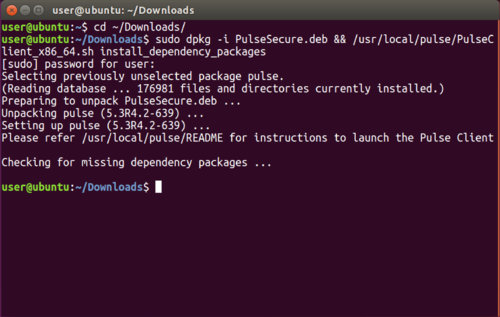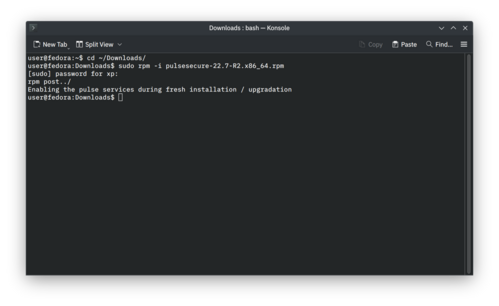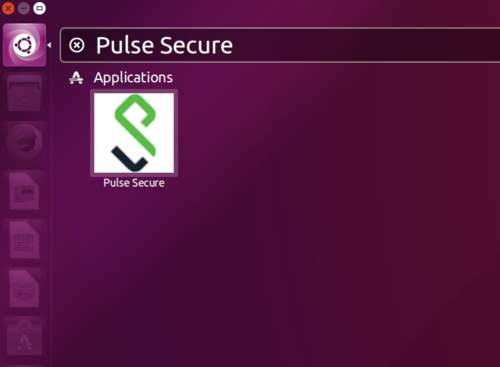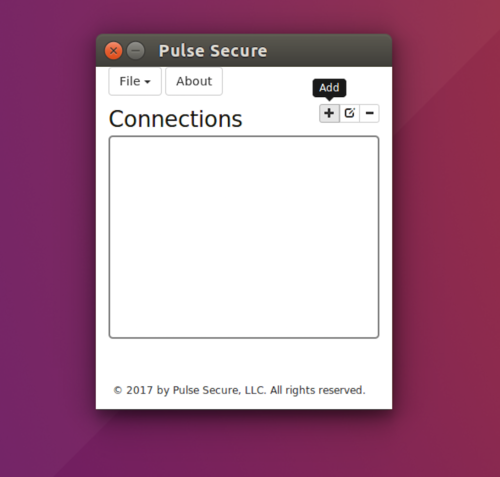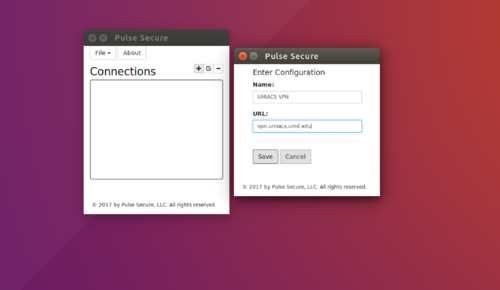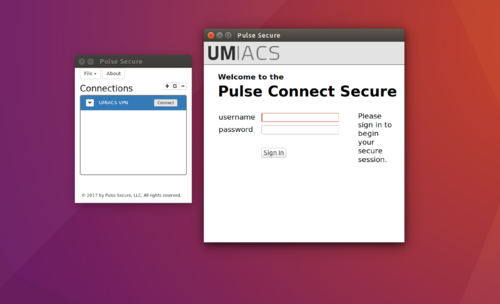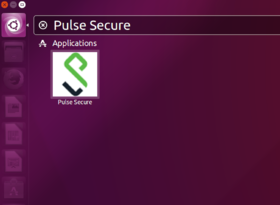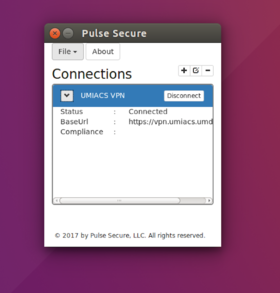Network/VPN/Linux: Difference between revisions
Jump to navigation
Jump to search
(DEB/RPM -> debian/red hat) |
No edit summary |
||
| Line 7: | Line 7: | ||
#'''Download the client:''' | #'''Download the client:''' | ||
#:[[Media:Pulsesecure_22.7.R2_amd64.deb|64 bit Pulse Secure Client <tt>.deb</tt> for Debian-based Linux (e.g. Ubuntu)]] | #:[[Media:Pulsesecure_22.7.R2_amd64.deb|64 bit Pulse Secure Client <tt>.deb</tt> for Debian-based Linux (e.g. Ubuntu)]] | ||
#:[[Media:Pulsesecure-22.7-R2.x86 64.rpm|64 bit Pulse Secure Client <tt>.rpm</tt> for | #:[[Media:Pulsesecure-22.7-R2.x86 64.rpm|64 bit Pulse Secure Client <tt>.rpm</tt> for Fedora-based Linux (e.g. Red Hat)]] | ||
#:''Upon starting the client for the first time it may ask to upgrade the client. This will pull an up-to-date version of the client with the most recent configuration.'' | #:''Upon starting the client for the first time it may ask to upgrade the client. This will pull an up-to-date version of the client with the most recent configuration.'' | ||
#'''Navigate to the download location in terminal. e.g.: ''' <tt>cd ~/Downloads</tt> | #'''Navigate to the download location in terminal. e.g.: ''' <tt>cd ~/Downloads</tt> | ||
Revision as of 13:37, 8 July 2024
Please note that this tutorial assumes you already have a network connection established. If you have a UMIACS account, you already have access.
The UMIACS VPN is accessible through the Pulse Secure Client.
Connecting through the Pulse Secure client
- Download the client:
- 64 bit Pulse Secure Client .deb for Debian-based Linux (e.g. Ubuntu)
- 64 bit Pulse Secure Client .rpm for Fedora-based Linux (e.g. Red Hat)
- Upon starting the client for the first time it may ask to upgrade the client. This will pull an up-to-date version of the client with the most recent configuration.
- Navigate to the download location in terminal. e.g.: cd ~/Downloads
- Install the package with dependencies, providing your password for sudo when requested.
- For a Debian-based OS, run:
sudo dpkg -i <insert_filename_here>.deb
- For a Debian-based OS, run:
-
- For a Red Hat-based OS, run:
sudo rpm -i <insert_filename_here>.rpm
- For a Red Hat-based OS, run:
- You will need to manually install the packages shown below before proceeding with the Install:
- For a Debian-based OS, run:
sudo apt-get install libnss3-tools net-tools - For a Red Hat-based OS, run:
sudo dnf install libbsd webkit2gtk3
- For a Debian-based OS, run:
- Start the client.
- and click 'Add' (+) under the connection section.
- Enter a name for your VPN connection and the server URL 'vpn.umiacs.umd.edu'
- Enter your UMIACS credentials and hit connect.
- When prompted for a secondary password, enter one of three options below (push, phone, or <press YubiKey>). For example, if you wish to push a notification to your device, type the word "push" into the secondary password box.
Second Credential Password Value: Result push Send a push verification to your Duo connected device phone Send a call verification to your Duo connected device. <press YubiKey> If you have a physical token then you would press the YubiKey for the one time password.
- Please note that registering a YubiKey for use with the VPN requires interaction with UMIACS Tech Staff. Please contact us if you would like to register a YubiKey for this purpose.
| Pro-tip: Select ‘Save Settings’ on the secondary authentication prompt to have Duo automatically use your preferred method. |
You should now be connected to the UMIACS VPN. You can close the window and the VPN will remain connected.
Checking VPN Status
- Launch the Pulse Client GUI
- Select the down arrow to show connection status.
